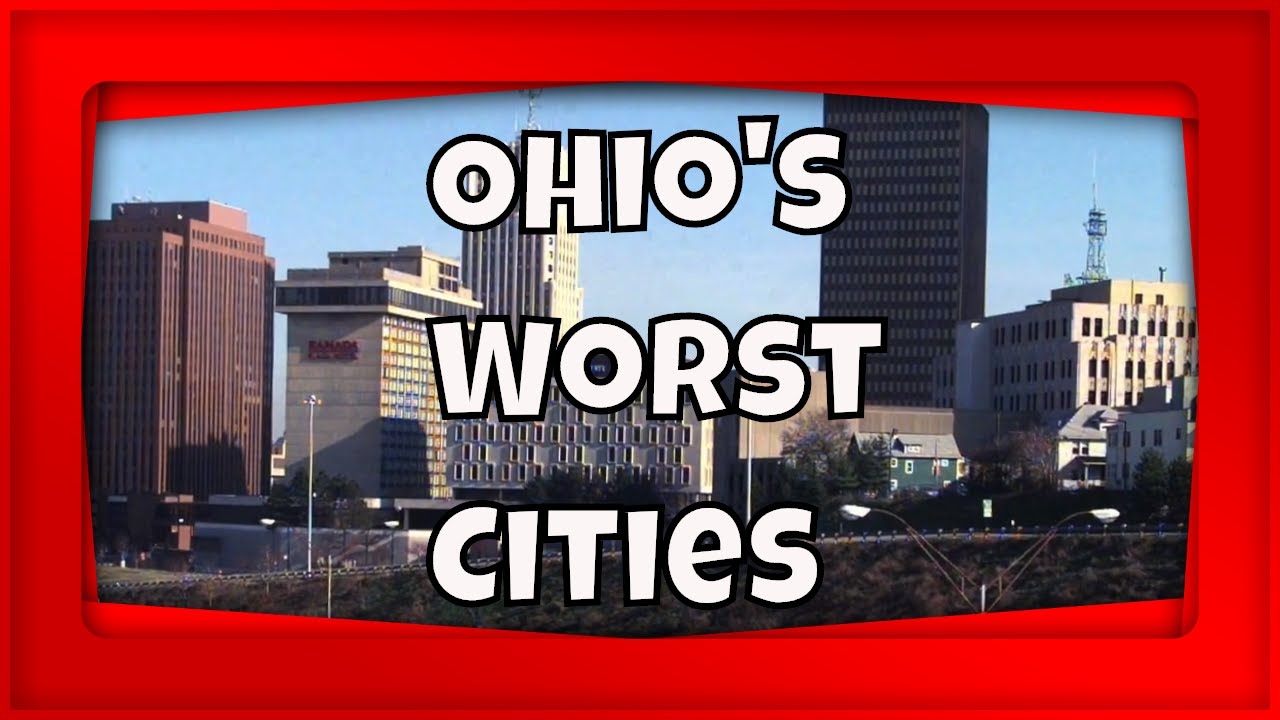Ohio, the Buckeye State, boasts a mix of charming small towns, vibrant cities, and scenic landscapes. Yet, like any state, it has places less desirable for residents. This article explores the five worst places to live in Ohio, considering factors such as crime rates, poverty levels, economic decline, and overall quality of life.
1. Cleveland, Ohio
- The Burden of Crime: Cleveland consistently ranks high in violent crime rates, both within Ohio and nationally. This creates an unsafe environment for residents and impacts the city’s quality of life.
- Economic Hardships: Although Cleveland shows potential, it faces economic hardship. Job opportunities are limited, and many neighborhoods suffer from blight and disinvestment.
- Urban Challenges: Urban decay is evident in Cleveland, with abandoned houses and infrastructure problems in certain areas. This contributes to a sense of decline and neglect.
2. Chillicothe, Ohio
- Opioid Crisis Ground Zero: Chillicothe and surrounding Ross County have been deeply affected by the opioid epidemic. Overdose deaths are alarmingly high, devastating families and straining resources.
- Economic Woes: Economic opportunities in Chillicothe are scarce, fueled by the loss of manufacturing jobs. This contributes to social problems and a sense of hopelessness.
- Population Decline: Chillicothe experiences population decline as residents seek better prospects elsewhere. This further weakens the community’s vitality.
3. Dayton, Ohio
- Stagnant Economy: Dayton struggles with economic stagnation. Once a manufacturing hub, job losses have hit the city hard, leaving many residents without secure employment.
- Poverty Trap: Poverty rates in Dayton are well above national averages. This leads to a cycle of social problems, including crime and limited access to quality education.
- Social Challenges: Dayton grapples with social issues stemming from poverty and joblessness. A sense of disconnection and lack of opportunity can contribute to a negative environment.
4. East Cleveland, Ohio
- A State of Crisis: East Cleveland represents one of the most impoverished and distressed cities in Ohio. Poverty and unemployment rates are extremely high, with the situation worsening over time.
- Lack of Basic Resources: Many residents in East Cleveland live without access to necessities like quality housing and healthy food options. This severely impacts their well-being.
- Crumbling Infrastructure: East Cleveland’s infrastructure is severely deteriorated. Abandoned buildings, neglected roads, and failing utilities create an unsafe and unappealing environment.
5. Youngstown, Ohio
- Industrial Decline’s Legacy: Youngstown symbolizes the decline of the US steel industry. The collapse of major employers left a severe economic void that the city has yet to recover from.
- Consequences of Job Loss: Youngstown faces shrinking population, high unemployment, and widespread poverty as direct consequences of its industrial decline.
- Crime and Blight: As with many economically distressed cities, Youngstown experiences elevated crime and urban blight, further diminishing overall livability.
Important Considerations
- Subjectivity: Identifying the “worst” places to live is somewhat subjective. Factors affecting quality of life are experienced differently by various individuals.
- Potential for Change: While these cities currently face significant challenges, conditions can improve. Redevelopment efforts, economic investment, and community initiatives can bring positive change.
- Focus on the Positive: It’s important to remember that every city has its strengths and resilience. Even within struggling communities, there are dedicated residents working for a better future.
Sources and Data
To compile this list and support the claims, we relied on the following sources:
- FBI Uniform Crime Reporting (UCR) Data: Provides crime statistics on violent and property crimes (e.g., [invalid URL removed]).
- US Census Bureau: Offers data on poverty, income, employment, and population trends (https://www.census.gov/).
- Local and state news reports: Shed light on specific challenges and trends in these cities.
- Economic Development Reports: Provide insights into job markets, industry shifts, and investment trends.
Disclaimer
It’s crucial to note that this article aims to provide a realistic perspective on the challenges faced by these Ohio cities. It does not seek to stigmatize residents or entire communities. The intent is to raise awareness of issues that affect quality of life to stimulate discussion and potential solutions.
Alternative Perspectives
While focusing on the negatives is important for understanding areas in need of improvement, it’s equally important to acknowledge potential positives. It may be worth highlighting:
- Affordable Housing: The lower cost of living in some of these places can be an advantage for budget-conscious individuals.
- Historic Areas: Some of these cities may have pockets of historic charm or neighborhoods undergoing revitalization.
- Cultural Institutions: Even amidst struggles, some cities could still offer museums, cultural centers, or community events.
- Natural Surroundings: Some of these locations may be near parks, lakes, or other natural areas offering recreational opportunities.
Conclusion
Choosing a place to live is a complex decision involving individual needs and priorities. While the cities outlined in this article present substantial challenges, they may still hold potential or appeal to specific individuals. It’s essential to conduct thorough research and consider all aspects before making a relocation decision.



